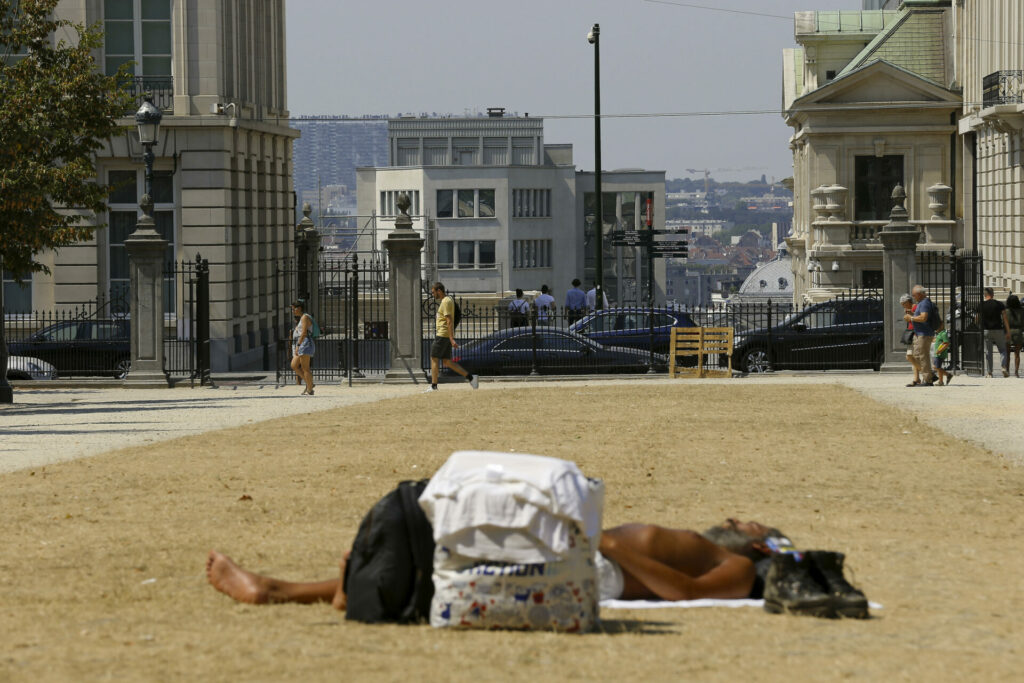Temperatures are forecast to exceed 30 °c in Brussels this weekend as Belgium prepares for the hottest days of this year.
Yet, as is often the case in urban areas, the heat will be more noticeable in Brussels thanks to the so-called "urban heat island effect." A 2020 study by the Brussels Environment Agency shows that the centre of Brussels can be up to three degrees warmer than the surrounding woods and rural districts.
Brussels has less greenery than the periphery of the city, resulting in the heat being trapped rather than dispersed. As well as the shade that trees offer, natural spaces also contribute to evaporation or evapotranspiration, whereas buildings absorb heat. Dark tarmac soaks up the sun's rays rather than bouncing them back into the atmosphere.
"High temperatures and clear skies lead to that urban heat island effect. In addition, building materials such as concrete, absorb solar heat. The increased temperatures are especially noticeable at night; whereas the countryside cools down quickly, urban areas radiate heat absorbed in the day," one of the authors behind the study, Rozemien De Troch, told Bruzz.
How to cool the city
As global temperatures rise, preparing our cities for more heat waves becomes a priority for urban planners. "It is vital we think about the layout of cities. For example, trees are crucial for relieving heat stress," De Troch explains. "Take the pedestrian zone, for example, there is only the occasional tree."
Heat stress is when the body can't get rid of excess heat, which causes people's heart rate to increase. City dwellers are automatically at higher risk of heat stress.
According to Brussels Environment Agency, large-scale measures to introduce more greenery and more areas with water (such as ponds and fountains) would need to be implemented on a large scale to have a positive impact on the quality of life for urban residents.
Related News
- Mercury set to rise as heatwave hits Belgium this week
- Brussels Heatwave Plan: How to get help when it's too hot
- Belgium in Brief: A heatwave in the making?
De Troch investigated the effects of more green and white colours in the city. Painting roofs, streets and buildings white would reflect heat and lower temperatures.
But such measures would only have a limited impact. Heatwaves are occurring increasingly often: while only four were recorded at the Uccle weather station between 1910 and 1920, ten were noted between 2010 and 2020.
"Research by the Royal Meteorological Institute (RMI) shows that both the intensity and the number of heat waves will increase significantly in Brussels. Specifically, the models predict that the number of heat waves in the centre of Brussels will triple, their intensity will double and their duration will go up by 50%," said De Troch.

